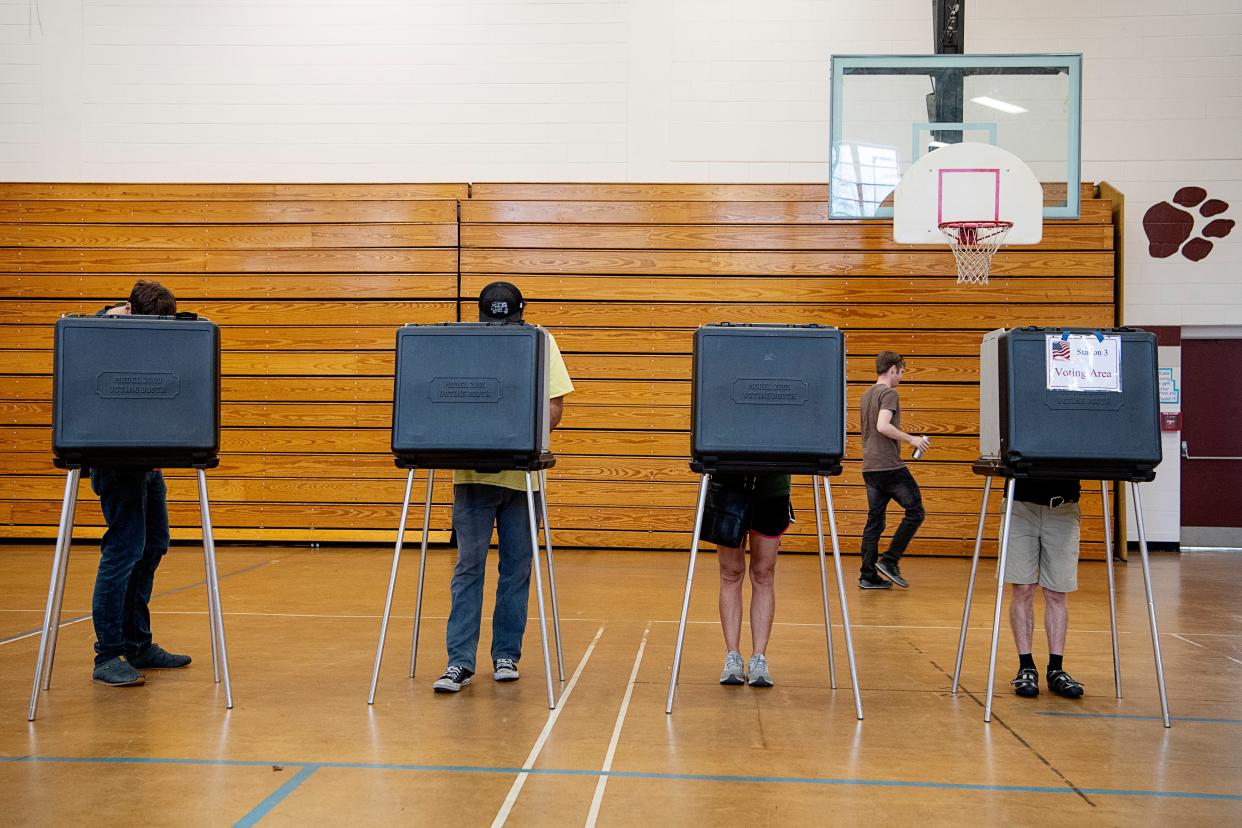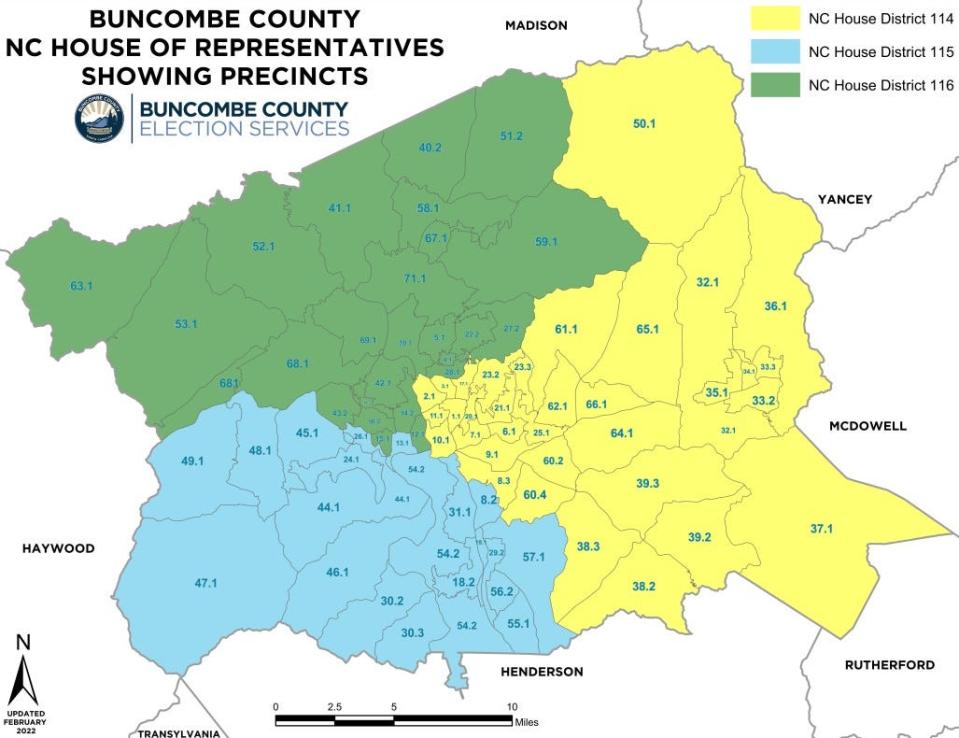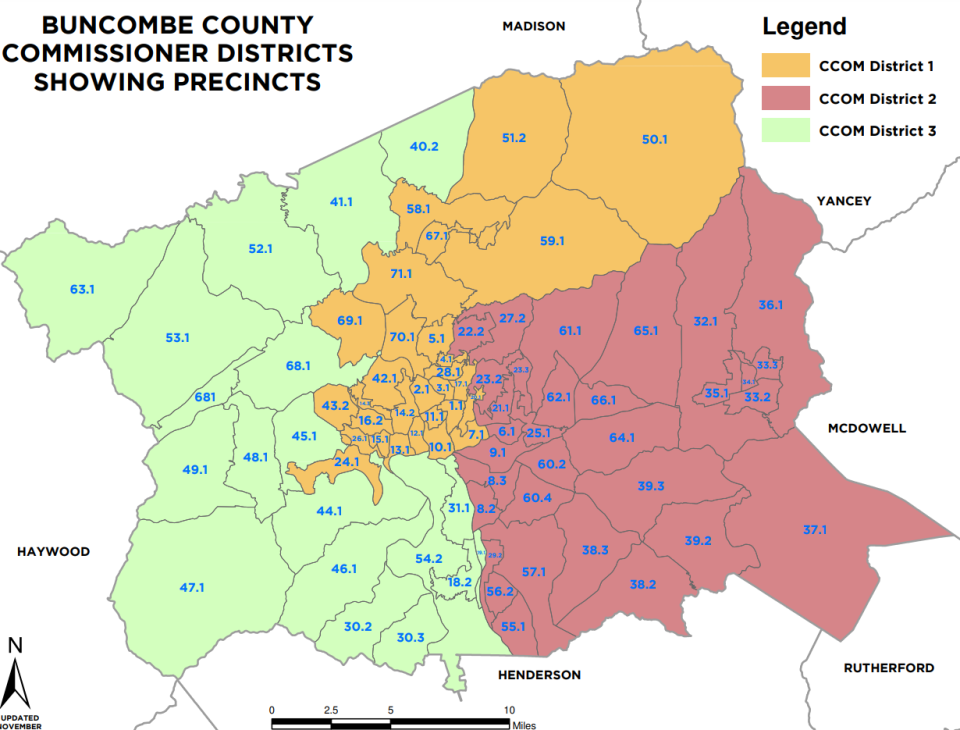Answer Man: Did I vote for all Buncombe commissioners or just 1? Shifting districts?

ASHEVILLE - Buncombe County 2022 elections officially ended Nov. 18 following certification of votes, but today’s question backtracks a little and asks about Buncombe County Board of Commissioner districts where there were some interesting elements at play.
Got a question for Answer Man or Answer Woman? Email Interim Executive Editor Karen Chávez at KChavez@citizentimes.com and your question could appear in an upcoming column.
Question: I was reading (the) article … Sunday … about our new District 2 commissioner and, as a new resident of Candler, was wondering why there are any district commissioners when it appears as they are elected by the whole county. I seem to remember, on election day, voting for all of the commissioners, in all districts, who were up for election. Why don’t we just say that they are all at large commissioners?
Related:What's next? Presidential election 2024: When is it, who's running, more
Related:Women win big in local Asheville elections; What's next for 1st elected school board?
Answer: There is a pretty straightforward answer to this question and then a fascinating, larger matter overshadowing it.
The simple answer is that those who lived in a certain district voted for only one commissioner who represents that district.
Buncombe County Board of Commissioners seats are not at large. This year, those partisan races resulted in a Democratic sweep.
On Nov. 8, Amanda Edwards was elected to a District 3 seat with 63.2% of the vote, Al Whitesides was elected to a District 1 seat with 66.8% of the vote, and Martin Moore was elected to a District 2 seat with 55.2% of the vote.
They faced Don Yelton, Anthony Penland and incumbent Robert Pressley, respectively, all GOP candidates.
Though all that is fairly straightforward, there is something about Buncombe County Board of Commissioner elections readers may not be aware of.
I’ll try my best to explain it here, with the help of Buncombe County Election Services Director Corinne Duncan.
So, for example, Martin Moore, the soon-to-be District 2 commissioner, ran in a different set of precincts than his soon-to-be predecessor, Robert Pressley. Before the map change, Pressley represented a large portion of Buncombe’s southeast. In the general election, he had to run in its southwest. He last ran for a commission seat in the 2018 map’s District 3 — yet another iteration of the maps, given they’ve been redrawn multiple times in the past four years — which used to be most of the county’s western precincts.
If you lived in North Carolina since or before early 2022, you may remember a legal battle over the constitutionality of district maps as drawn by the GOP-controlled General Assembly. It delayed the state’s primary, but when the dust settled, Buncombe County had new N.C. House district maps.
Since Buncombe’s commission districts align with house maps, commissioners found themselves twice in 2022 potentially running inside newly drawn lines.
The maps initially proposed for Buncombe would have had Whitesides and Edwards running against each other in 2022 and Democrat commissioners Parker Sloan and Terri Wells running against each other in 2024.


That didn’t happen.
When the final version of district maps were approved in February, incumbent commissioners found they no longer had to run against each other. But they also found their districts had shifted.
District 1 in the 2021 map — which was not used for an election — stretched from the northeast down through Asheville. Now it represents most of the county’s eastern portion.
The 2021 maps’ District 2 used to be a large portion of the county's east. Now it takes up most of the county’s southwestern region.
Related:Election maps threaten to pit incumbent Buncombe commissioners against each other in 2022
District 3 took up most of the county’s west in the 2021 map. Now it represents the northwestern corner.
Given these shifts, which map did residents use in the 2022 general election?
They used the new ones, which, according to Duncan, won’t actually be officially in use until commissioners are sworn in.
According to county spokesperson Lillian Govus, that will happen Dec. 5.
This map shift is somewhat confusing, and Duncan sympathized.
“I used to be the (geographic information system) person for the department,” she said. “I remember an embarrassing moment when I called up someone in (Washington) D.C. and was like, ‘Your maps are wrong.’”
They weren't wrong, but Duncan’s confusion was somewhat merited given the odd shifts that happen when district maps get redrawn.
More:NC election results: Buncombe County commission all Democrats with Martin Moore victory
More:Democrat-endorsed Buncombe School Board candidates win 3 seats
But, inside elections offices, the logistical shift accompanying the new maps wasn’t as difficult to track as it might have been.
“For elections offices all across the state, we use the same type of a system to assign addresses to districts,” Duncan said. “When districts are changed on precinct lines, the change is very easy. And that was the case. When they are not on district lines, it is very hard. There's not an in between.”
The problem wasn’t in reworking election precincts. It was in timing, she added.
“The struggle that we had was the entire election moved by three months as a result of the district changes coming in so late,” Dunan said. “That wasn’t, of course, not just for county commissioners, but it was difficult for us because our planning was for three months’ difference.”
This year, of 209,476 eligible voters, 120,558 people voted in Buncombe’s general election. That’s a higher number of people than in 2018 though the 57.5% turnout percentage was lower, according to Duncan. The state’s turnout this year was about 51%.
Andrew Jones is an investigative reporter for the Asheville Citizen Times, part of the USA TODAY Network. Reach him at @arjonesreports on Facebook and Twitter, 828-226-6203 or arjones@citizentimes.com. Please help support this type of journalism with a subscription to the Citizen Times.
This article originally appeared on Asheville Citizen Times: Answer Man: Did I vote for all Buncombe districts or just one?

